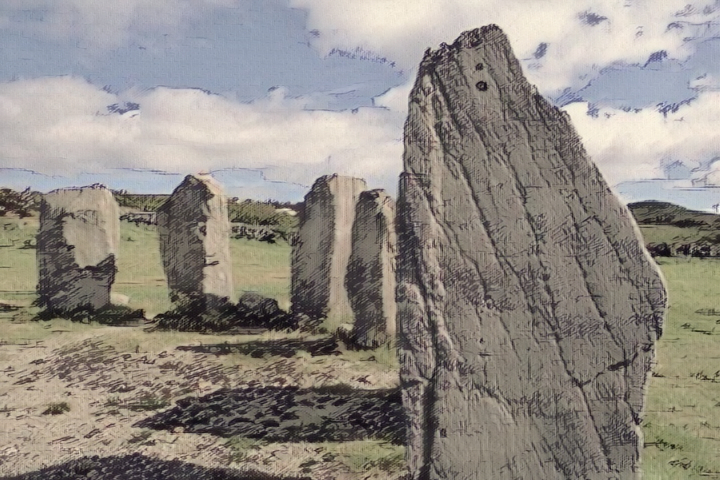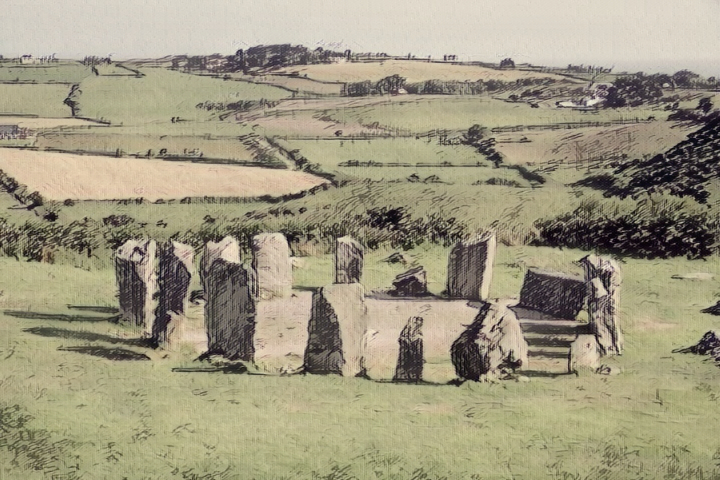Drombeg stone circle, also known as The Druid’s Altar, is a small megalithic site located in County Cork, Ireland. It is one of the most visited megalithic sites in Ireland and is protected under the National Monuments Act. The stone circle originally consisted of 17 closely spaced stones, of which 13 survive today. The stones are made from local sandstone and the circle spans 9.3 meters in diameter.
As an axial or “Cork-Kerry” stone circle, it contains two taller entrance stones placed opposite a recumbent axial stone. Its axis is oriented southwest towards the setting sun. The most westerly stone is the long recumbent and has two egg-shaped cup-marks, one with a ring around it. This arrangement creates a southwest axis and orients the monument in the direction of the setting sun during the midwinter solstice.


Excavations at the site have revealed that the stone circle was active around 1100-800 BC. Radiocarbon dating of samples taken from the site suggest that it was active during this time period. An inverted pot, found in the center of the circle, contained the cremated remains of a young adolescent wrapped with thick cloth. The pot was found close to the center of the circle and was found alongside smashed sherds and a collection of sweepings from a pyre.
Near the stone circle, approximately 40 meters to the west, are two round stone-walled prehistoric huts and a fulacht fiadh. Evidence suggests the fulacht fiadh was in use until approximately the 5th century AD. Of the two huts, the largest had a timber roof supported by timber posts. The smaller hut contains the remains of a cooking sport on its eastern side. A causeway leads from the huts to the fulacht fiadh, which has a hearth, well and a water trough.
